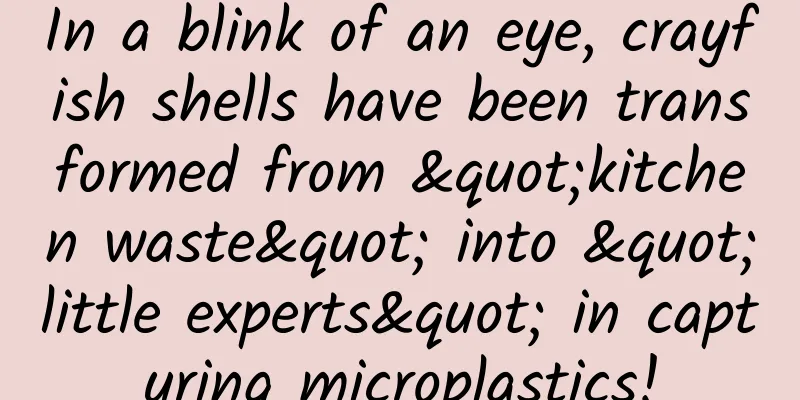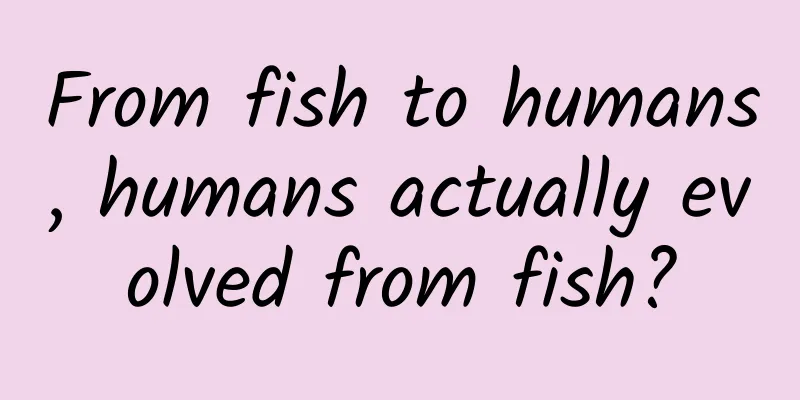In a blink of an eye, crayfish shells have been transformed from "kitchen waste" into "little experts" in capturing microplastics!

|
Author: Shi Xiangqi and Li Chuanfu Microplastic pollution has become a global environmental problem. With a diameter of less than 5 mm, it is widely present in the ocean, fresh water, drinking water and air, posing a potential threat to human health and the natural environment. Recently, Professor Deng Hongbing's team from the School of Resources and Environmental Sciences of Wuhan University used discarded crayfish shells as raw materials to develop a new type of all-biomass fiber sponge material, which showed extremely high efficiency in removing microplastics from water. The crayfish industry is a model industry for rural revitalization in Hubei Province. While the crayfish industry is booming, Wuhan produces nearly 100,000 tons of surplus shrimp shells each year, which has caused serious environmental pollution problems. Professor Deng Hongbing's team found that by treating discarded crayfish shells with acid and alkali, chitin fiber skeleton materials can be obtained. This material can effectively capture microplastics without causing secondary pollution to the water body. In further research, the team used the dual strategies of "hydrogen bond induced rearrangement" and "multi-level structure exposure" to interrupt and rearrange the two native hydrogen bond networks of chitosan (α- and β-chitosan) in shrimp chitosan and squid bone and cuttlefish bone, forming a multi-level fiber framework sponge material. The adsorption capacity of this material for 100nm polystyrene microspheres is as high as 411.14mg/g, which is 3-48 times that of other reported chitosan/chitosan adsorption materials. The picture shows the comparison of shrimp shells before and after processing During the preparation process, the research team adopted a top-down "multi-level structural exposure" strategy, and through two steps of simple acid-base treatment, the discarded crayfish shells were prepared into three-dimensional porous crayfish shells with dual exposure of natural fiber bundle skeletons and capture sites. Crayfish shells with this structure can be put into a net bag and thrown into the water to effectively absorb microplastics in the water. In addition, this material is not disposable. The team has also developed a method to "wash" the microplastics in the used crayfish shells, realizing the sustainable application of crayfish shells and truly achieving a green cycle of "waste treatment with waste." In addition, the team proposed a new method of "dynamic conversion of forces" for biomass multi-level fiber capture materials based on high biosafety, using chitin nanofiber networks derived from squid bones and cellulose microfibers derived from cotton to self-assemble by hydrogen bonds, to construct a full biomass multi-level fiber framework with activated adsorption sites and adaptable to complex environmental factors. This material showed good adsorption capacity for polystyrene, polymethyl methacrylate, polypropylene and polyethylene terephthalate. The picture shows all-biomass fiber sponges prepared into various sizes and shapes. (Photo provided by the research team) The material is easy to prepare, does not require any cross-linking agents, and can be completely degraded, so it is also a very environmentally friendly material. In practical applications, this new all-biomass fiber sponge can remove microplastics through physical interception, electrostatic attraction, and multiple molecular interactions, and can still maintain stable adsorption under the influence of environmental factors such as inorganic particles, heavy metals, organic pollutants, and microorganisms. In the future, this material can be widely used in water purifier filter elements, large-scale tap water purification devices, sewage treatment plants and other scenarios, providing an efficient, economical and environmentally friendly solution for the control of microplastic pollution. |
<<: The warmest winter in Sichuan is here!
>>: The lakes on the Qinghai-Tibet Plateau are quietly "expanding"
Recommend
The efficacy and function of winter mallow leaves
Traditional Chinese medicine requires the use of ...
The efficacy and function of sea daffodil
For the Chinese medicinal material such as sea da...
The efficacy and function of snow ginseng
Do you know what snow ginseng is? It is a kind of...
The efficacy and function of Zhulan root
Zhulan root is a relatively familiar traditional ...
The little things you ignore on the road cause more than 8,000 deaths every year
An eMule is indispensable on the road to success ...
It's not easy to be an astronaut! The latest study confirms that space flight may cause permanent bone loss in 20 years
It's cool and proud to break out of the earth...
The efficacy and function of false spinach
Many people choose fake spinach because of its hi...
The efficacy and function of bright leaf birch root
As a traditional Chinese medicine, do you know th...
Medicinal value of wolfberry
There are many kinds of common foods in life. Whe...
The efficacy and function of Bali Ma
Balimah is a traditional Chinese medicine, also k...
What are the effects of Chuanbei
Although Chuanbei has a very good effect of clear...
The "king of cholesterol" turns out to be this! If you don't want your blood lipids to rise, eat less of these 3 foods
Cholesterol is essential for the normal functioni...
The efficacy and function of thorny honey
Thorn honey is a common type of traditional Chine...
The efficacy and function of Dianhai Narcissus
Dianhai daffodil is a common Chinese medicinal ma...
Eating, drinking, defecating and urinating are all done in the bag. Will the baby kangaroo be suffocated by the smoke?
What is it like to stay in a kangaroo mother'...









